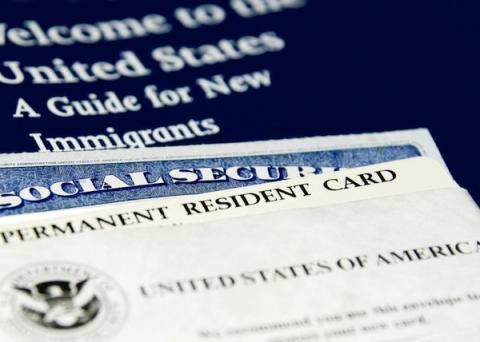The Deferred Action for Childhood Arrivals (DACA) process came into effect June 15, 2012 under the oversight of U.S. Citizenship and Immigration Services (USCIS). The Obama administration initiated DACA in an attempt to answer a growing issue: undocumented immigrants who entered the U.S.A. as children.
These children were not part of the decision to enter the U.S. illegally. They came with parents when they were young, grew up in the United States, attended U.S. schools and have been shaped by U.S. culture. They constitute a large group who grew up American, but have no legal standing in the country. They call themselves "DREAMers," after the proposed "Development, Relief, and Education for Minors (DREAM) Act", and number an estimated 900,000.
What DACA Offers and Requires
DACA does not provide permanent immigration status to applicants. Instead, approval under the process grants a two year, renewable deferred action (an administrative relief from deportation), during which time the applicant can legally work in the United States without fear of removal proceedings.
To qualify for the program, an applicant must have arrived in the U.S. prior to age sixteen, and resided continuously in the U.S. without legal status since June 15, 2007.DACA applicants must be younger than 31 years as of June 15, 2012, and at least 15 before they apply. An exception is granted to children under the age of 15 who face deportation proceedings.
In addition, applicants must be enrolled in or graduated from a U.S. high school, or possess a GED. Honorably discharged military veterans also qualify for DACA.
Applicants convicted of felonies, multiple misdemeanors, or serious misdemeanors do not qualify, nor do any applicants deemed to pose a risk to national security or public safety.
DACA, One Year In
After obtaining information on DACA applicants through the Freedom of Information Act, the Brookings Institute painted a statistical picture of the process’ applicants. In its first 12 months of existence, DACA received 557,412 applications and accepted 537,662 for review. The number suggests almost 59 percent of eligible individuals applied for deferred action.
Of the 537,662 applicants, 74.5 percent received approval, 24.5 remained under review as of the time of the study, and 1 percent of applicants were denied. Applicants live in all 50 states and the District of Columbia. USCIS also received applicants from Guam, Puerto Rico, and the Virgin Islands.
Applicant Nationality
Applicants were born in 192 nations, although 25 nations account for 96 percent of total numbers. By far the bulk of applicants were born in Mexico. The ten most common places of birth were as follows:
- Mexico (74.9 percent)
- El Salvador (4 percent)
- Honduras (2.7 percent)
- Guatemala (2.5) percent
- South Korea (1.5 percent)
- Peru (1.4 percent)
- Brazil (1.2 percent)
- Columbia (1.1 percent)
- Ecuador (1.0 percent)
- The Philippines (0.7 percent)
Only 4 percent of applications came from Asian nations, a surprisingly low number compared to projected estimates. Approximately 75 percent of applicants had lived in the U.S. for over a decade, and almost a third entered the country when they were 5 or younger.
Motivation for Applying
The majority of applicants were older adolescents and young adults, either still in high school or in college; this can include online school. These young DREAMers are considering their future and see DACA as a means to remain in the country while complying with national law.
The Future of DACA
Immigration remains a hot-button topic. Opponents of DACA question the program’s legitimacy and whether the administration has the right to supersede existing immigration law.
Advocates of DACA believe DREAMers had no responsibility for their families’ decision to enter the country illegally and came by their precarious position through no fault of their own. Ultimately, until a decision is made one way or the other on the DREAM Act, DREAMers’ positions in the U.S. will remain in doubt, with or without DACA approval.
